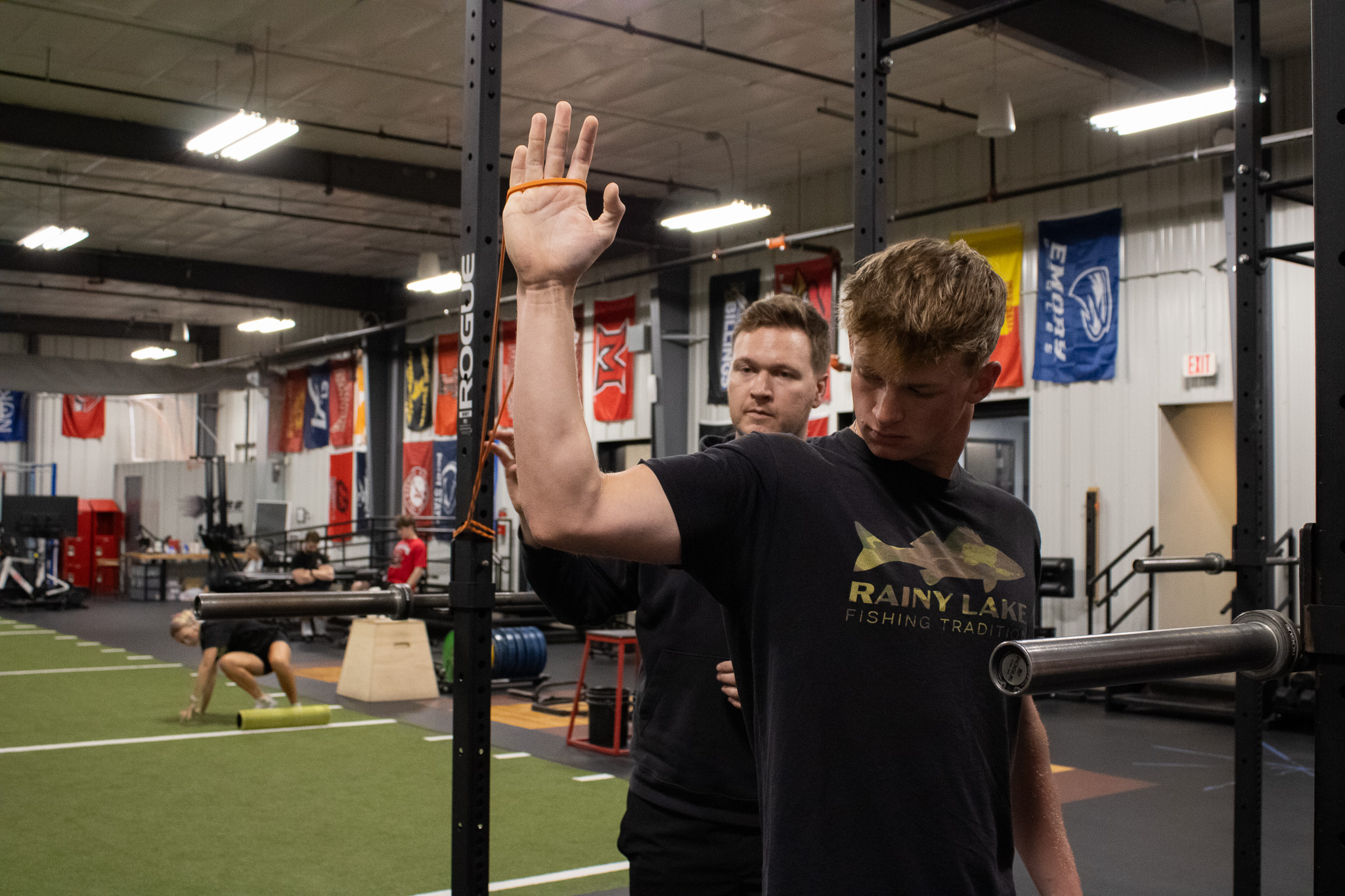Rehabilitation after a shoulder or elbow injury is a crucial process for athletes looking to return to sport. The transition from recovery to performance requires careful and structured testing to ensure athletes are physically ready to handle the demands of their sport. One of the most effective ways to assess this readiness is through a series of return-to-sport tests that evaluate the athlete's range of motion, strength, and functional performance.
Here, we break down a detailed Upper Extremity (UE) Return-to-Sport Test Battery designed to assess athletes’ readiness to return to sport following a shoulder or elbow injury.
1. Range of Motion (ROM)
Full, pain-free range of motion (ROM) is the first step in assessing an athlete’s readiness to return to sport. The test includes:
- Full non-painful ROM: Ensuring the shoulder and elbow joint moves without discomfort.
- Total ROM (Shoulder ER+IR) (TROM): TROM should be within 5 degrees of the non-throwing shoulder.
- Horizontal Adduction: The athlete should achieve 40 degrees of horizontal adduction in the shoulder.
- Glenohumeral Internal Rotation Deficit (GIRD): GIRD should be less than 15° to ensure adequate shoulder mobility and prevent compensatory movements.
2. Isometric Strength (Internal Rotation/External Rotation)
Objective strength testing is crucial for evaluating the strength of shoulder muscles that play a pivotal role in both throwing and overhead movements.
- Tindeq 90/90 Supported Position: The athlete performs isometric strength testing for both internal rotation (IR) and external rotation (ER) at 90/90 in a supported position.
- Normative Data based on healthy college level baseball players:
- Internal Rotation (IR): The athlete should have at least 115% strength compared to the non-throwing shoulder.
- External Rotation (ER): The athlete should have 95% strength compared to the non-throwing shoulder.
- ER/IR Ratio: A healthy ratio should fall between 72-76%.
- ER Torque to Body Weight Ratio: This should range between 18-23%.
- IR Torque to Body Weight Ratio: This should range between 26-32%.
3. Athletic Shoulder (ASH) Test
The ASH test assesses the athlete’s shoulder strength in different arm positions and is conducted using a prone position with the arm abducted in 3 different angles. A force plate is the gold standard for this test, but dynamometers are also widely used.
- Test Positions:
- 90° abduction
- 135° abduction
- 180° abduction
- Normative Data:
- Limb symmetry within 10%.
- Mean peak force normalized to body weight (BW) should range between 11-15%.
4. Posterior Shoulder Endurance Test (PSET)
The PSET evaluates endurance and stability of the posterior shoulder muscles by assessing the athlete’s ability to repeatedly move their arm into the T position (palm down) following the beat of the metronome.
- Test Setup:
- Metronome: 30 beats per minute (bpm) to maintain cadence.
- Weight used: 2% of body weight, rounded to the nearest ½ pound.
- Test Duration: Athlete must perform reps until failure, or until they are unable to hold the 90° position, make substitutions, or fall off cadence.
- Normative Data: Limb symmetry within 10%.
5. Closed Kinetic Chain Upper Extremity Stability Test (CKCUEST)
The CKCUEST assesses the athlete's core and shoulder stability during dynamic movement. It evaluates functional stability and endurance by having the athlete perform alternating hand taps while maintaining a plank position.
- Test Setup:
- Male: Standard plank position.
- Female: Modified plank position.
- Hand Placement: Hands 36 inches apart, feet ≤12 inches apart.
- Test Protocol:
- 15-second alternating hand taps, with 45 seconds of rest between sets.
- 1 warm-up round and 3 timed trials.
- Discontinue the test if it causes pain.
- Normative Data:
- Male: 26 reps.
- Female: 22 reps.
6. Single Arm Seated Shot Put Test
The single arm seated shot-put test measures an athlete's ability to produce force and power with their shoulder. The test involves pushing a weighted ball as far as possible while maintaining proper form.
- Test Setup:
- Athlete sits with their back against the wall, knees bent at 90 degrees, and feet flat on the floor.
- The athlete performs the shot put motion, keeping their head, scapula on the non-test side, and back in contact with the wall.
- Normative Data:
- Men: 596.9 cm (235 inches).
- Normal range for dominant arm: 560-630 cm (220-248 inches).
- Women: 342.5 cm.
- Normal range for dominant arm: 318-365 cm.
- Limb symmetry: The dominant arm should be 5-10% stronger than the non-dominant arm.
Why Return-To-Sport Testing Matters For Injured Athletes
The Upper Extremity Return-to-Sport Test Battery provides a comprehensive approach to evaluating the athlete's readiness to return to sport following a shoulder or elbow injury. By assessing key factors such as ROM, strength, endurance, stability and power, this testing protocol ensures that athletes are not only free from pain but are also physically prepared for the demands of their sport. Using these objective measures, clinicians and athletic trainers can help prevent re-injury and optimize an athlete's performance as they transition back to their athletic activities.
Understanding and applying these tests will support safe, successful returns to sport and reduce the risk of setbacks after injury recovery. If you're an athlete looking to get back on the field after a shoulder or elbow injury, trust our experts at Engineered Performance by DMOS with your care. Reach out to us about our sports physical therapy services today by filling out our contact form.








